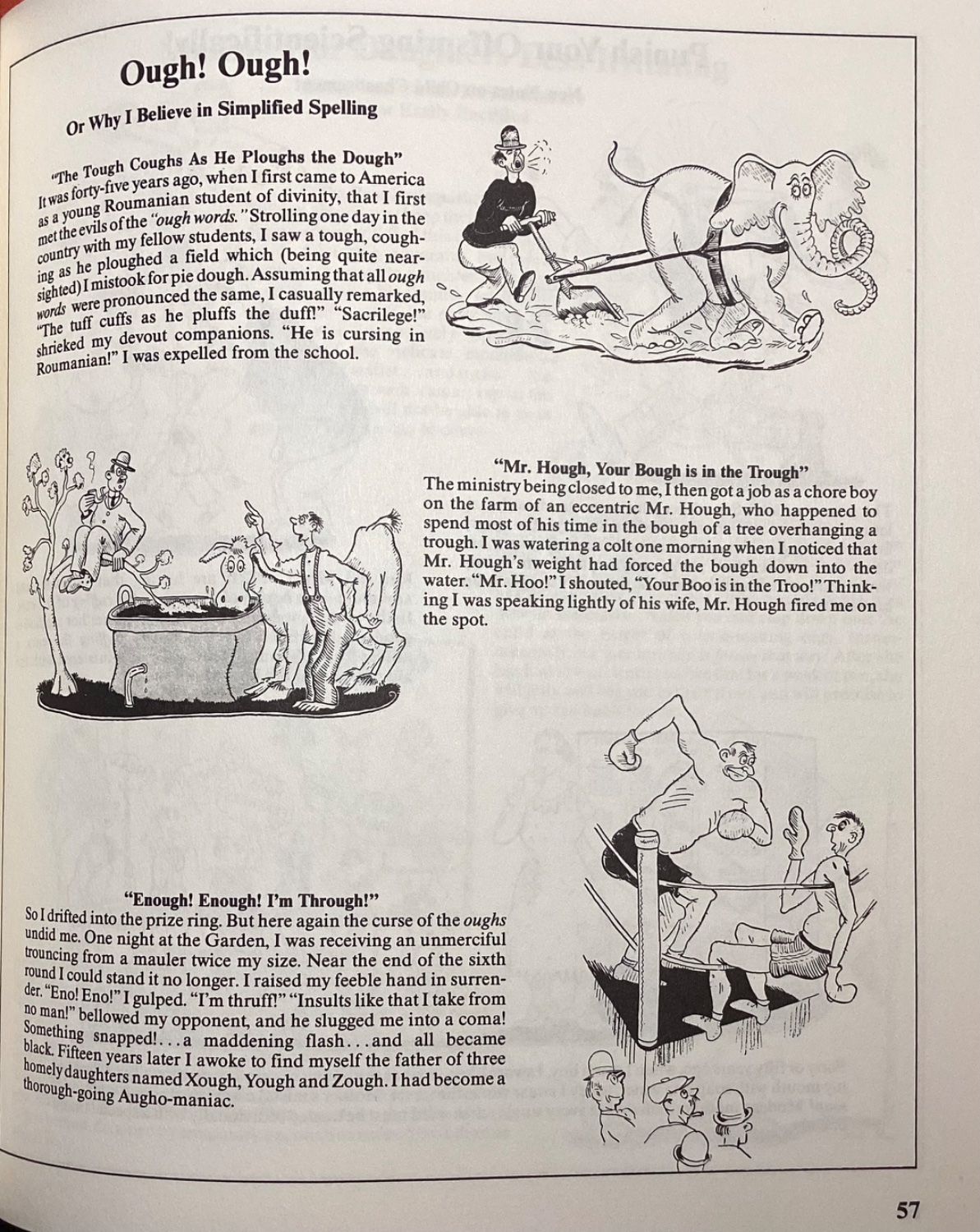That’s why everyone learning English should also learn basic IPA to be able to read phonetic transcription and pronounce words correctly.
Just knowing the symbols for all English vowels/consonants is fine, no need to study IPA more than that, unless you find it interesting, like me.
I recommend reading this Wikipedia article: https://en.wikipedia.org/wiki/English_phonology.
Just look up consonant and vowel charts here, you don’t need to study the details unless you really need to. Especially given that this article is full of linguistic jargon, and you probably won’t be able to understand any of this unless you have elementary knowledge of phonetics/phonology.
In Ukrainian schools they teach English with IPA broad transcription. And most paper dictionaries I had also had the transcriptions next to the words. It was very helpful in remembering the pronunciation
Threw. Few.
Thru.
Holy shit this is really cool.
Yeah, but wow, that just keeps going and going…
Just like your mom! What hard working lady!
HA! GOTT’EM!
Hard to speak, too? Just put a hot potato in your mouth.
Buffalo buffalo Buffalo buffalo buffalo buffalo Buffalo buffalo.
“Buffalo buffalo Buffalo buffalo buffalo buffalo Buffalo buffalo” is a grammatically correct sentence in English that is often presented as an example of how homonyms and homophones can be used to create complicated linguistic constructs through lexical ambiguity. It has been discussed in literature in various forms since 1967, when it appeared in Dmitri Borgmann’s Beyond Language: Adventures in Word and Thought.
https://en.wikipedia.org/wiki/Buffalo_buffalo_Buffalo_buffalo_buffalo_buffalo_Buffalo_buffalo
deleted by creator
It is grammatically correct, just semantically ambiguous. Buffalo is a proper noun, a noun, and a verb.
A semantically equivalent form preserving the original word order is: “Buffalonian bison that other Buffalonian bison bully also bully Buffalonian bison.”
bill!
bill!
In German, we have “Wenn Fliegen hinter Fliegen fliegen, fliegen Fliegen Fliegen nach”. Notice that all nouns are capitalized in German.
But that one is really easy to understand when you know German, unlike the buffalos
Yup. I know a bit of German, but that doesn’t help with the buffalos at all.
From Dr Seuss’s “The tough coughs as he ploughs the dough”

Tho
Surely you’ve thoroughly thought this through though?
It’s tough.
They did. And don’t call them Shirley!
Buffalo buffalo Buffalo buffalo buffalo buffalo Buffalo buffalo.
“Buffalo buffalo Buffalo buffalo buffalo buffalo Buffalo buffalo” is a grammatically correct sentence in English that is often presented as an example of how homonyms and homophones can be used to create complicated linguistic constructs through lexical ambiguity.
Do love me some annoying wordplay, like the Chinese poem Lion-Eating Poet in the Stone Den
…I spend a lot of my time thinking while waiting in the drive-thru.
I feel like there needs to be a comma somewhere in that sentence but I don’t know why…
Before the last word.
Knowing there should be a comma in the sentence, is half the battle. Knowing why… is the other half.
Nayeth, though thou hath thoroughly thought thots through.
That’s tough buddy
Depending on the location, “Aaron earned an iron urn” is an interesting example in spoken language.
Ern Ern en Ern Ern
Too. Two. To.














